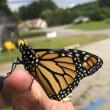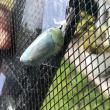Saying good-bye to year’s monarch butterflies
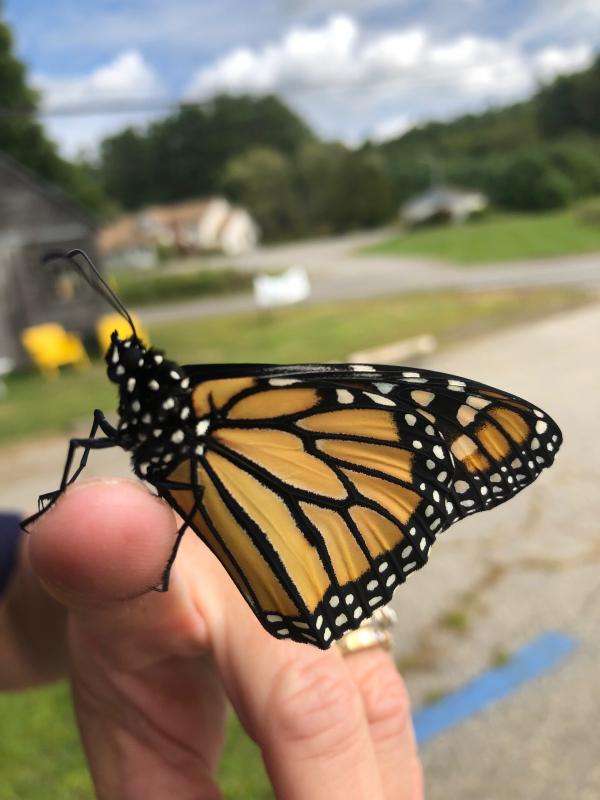 A butterfly is ready to be tagged and released. JENNY BENNETT/Boothbay Register
A butterfly is ready to be tagged and released. JENNY BENNETT/Boothbay Register
 Sue Aubuchon and Lorrie Davis with one of the monarch tanks at Morris Farm. JENNY BENNETT/Boothbay Register
Sue Aubuchon and Lorrie Davis with one of the monarch tanks at Morris Farm. JENNY BENNETT/Boothbay Register
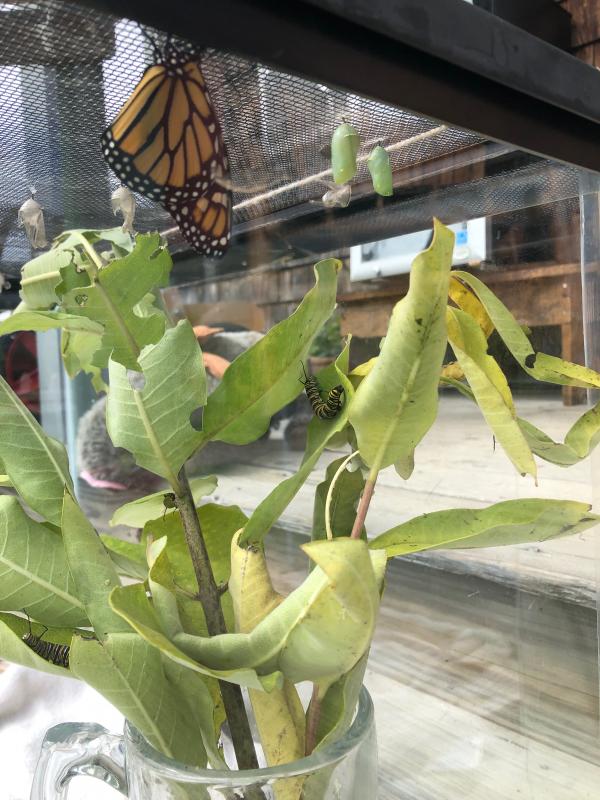 A newly emerged butterfly and an almost full-grown caterpillar. JENNY BENNETT/Boothbay Register
A newly emerged butterfly and an almost full-grown caterpillar. JENNY BENNETT/Boothbay Register
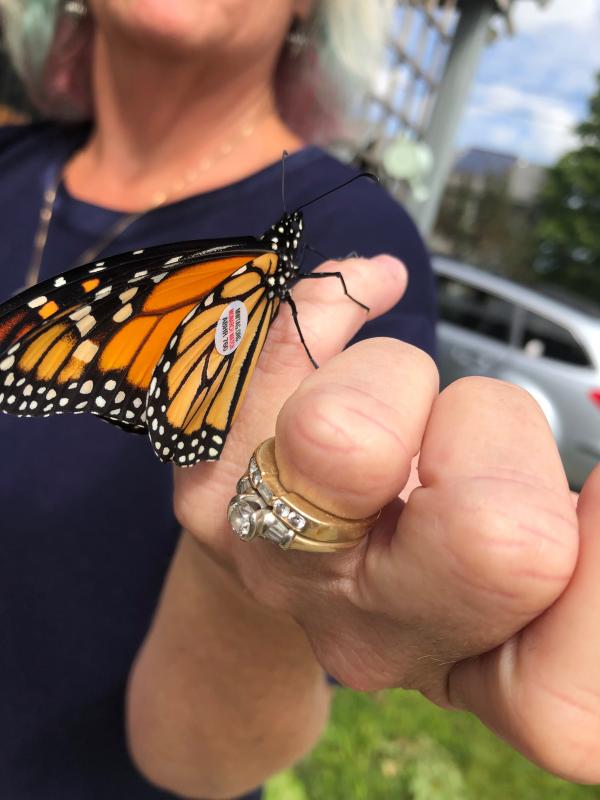 A tagged butterfly is ready for release. JENNY BENNETT/Boothbay Register
A tagged butterfly is ready for release. JENNY BENNETT/Boothbay Register
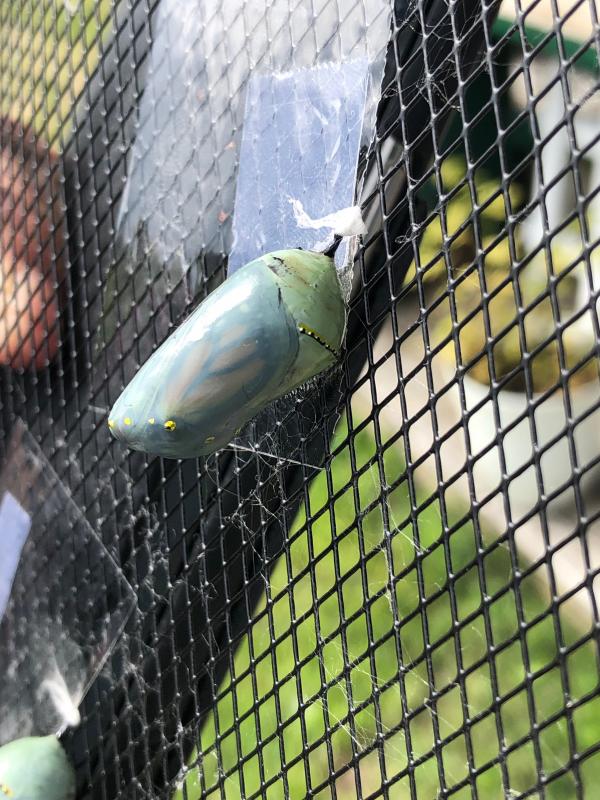 The butterfly is visible through the thin case of the chrysalis. The jeweled necklace is the pupa’s air holes. JENNY BENNETT/Boothbay Register
The butterfly is visible through the thin case of the chrysalis. The jeweled necklace is the pupa’s air holes. JENNY BENNETT/Boothbay Register
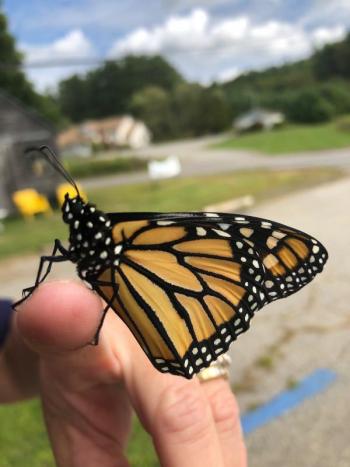 A butterfly is ready to be tagged and released. JENNY BENNETT/Boothbay Register
A butterfly is ready to be tagged and released. JENNY BENNETT/Boothbay Register
 Sue Aubuchon and Lorrie Davis with one of the monarch tanks at Morris Farm. JENNY BENNETT/Boothbay Register
Sue Aubuchon and Lorrie Davis with one of the monarch tanks at Morris Farm. JENNY BENNETT/Boothbay Register
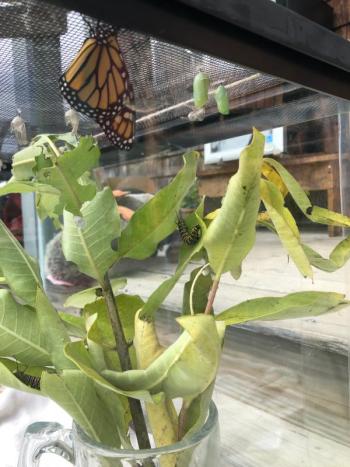 A newly emerged butterfly and an almost full-grown caterpillar. JENNY BENNETT/Boothbay Register
A newly emerged butterfly and an almost full-grown caterpillar. JENNY BENNETT/Boothbay Register
 A tagged butterfly is ready for release. JENNY BENNETT/Boothbay Register
A tagged butterfly is ready for release. JENNY BENNETT/Boothbay Register
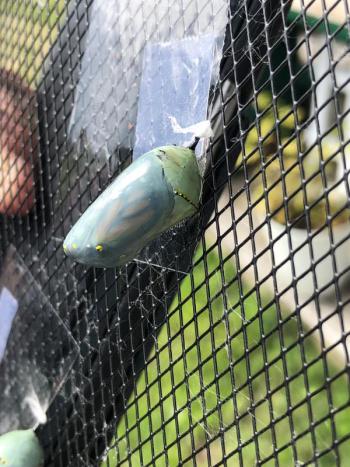 The butterfly is visible through the thin case of the chrysalis. The jeweled necklace is the pupa’s air holes. JENNY BENNETT/Boothbay Register
The butterfly is visible through the thin case of the chrysalis. The jeweled necklace is the pupa’s air holes. JENNY BENNETT/Boothbay Register
As the summer people leave, so, too, do the monarch butterflies. Since May, these beautiful insects have been amongst us, but they’ve been heading south for the past few weeks.
Monarchwatch.org describes their extraordinary cycle of life: Emerging from the mountain forests of central Mexico in early spring, the butterflies fly north, surviving for two to three weeks before laying their eggs and dying. The next generation flies farther north, living two to three weeks before laying its eggs and dying. The third generation arrives in Maine, but these, like most butterfly species, also live just two to three weeks.
By late summer, Maine is home to the fourth or even fifth generation. This one, so far removed from the Mexican one, makes the journey all the way back to Mexico, traveling some 25 miles per day and covering 3,000 miles in about two months. In Mexico, they will hibernate through the winter and come spring will breed, lay eggs and die.
Two local women have become enthusiastic supporters of the monarchs. Lorrie Davis and Sue Aubuchon have, between them, found, raised and released hundreds. Davis, postmaster at the Boothbay post office, has been raising them in her Westport Island home for several years and is passionate about the importance of conserving the species.
“In the last 20 years, the monarch numbers on the West Coast have declined by close to 97%,” she said. “Here on the East Coast they’ve declined by about 80%.”
Davis said the loss is largely attributed to pesticides and the destruction of the butterflies’ natural habitats. “In the Midwest, right on the migration route, farmers use broad-leaf pesticides to get rid of the weeds. But when they do that, they kill the milkweed and that’s the monarch caterpillar’s food.”
The loss of habitat is as concerning, said Aubuchon, office manager at Morris Farm in Wiscasset. “We’re encouraging all the things the butterflies need: milkweed, shelter, water,” she said. “This year we’ve become a designated way station and we’re tagging the butterflies that hatch out here. Hopefully they’ll make it back to Mexico and someone will find the tag and the data will be recorded.”
Raising the butterflies requires little more than a reptile tank and a supply of milkweed. From egg to butterfly takes four weeks. It’s estimated that one caterpillar will consume an entire milkweed plant.
Both women are encouraged by the rise in local awareness. People often ask how they can become involved.
“Everyone can do something,” said Davis. “Even if you don’t want to get into the raising, you can stop using pesticides, plant flowers for all three seasons, leave more land to go natural. It all helps.”
Learn more at monarchwatch.org
Event Date
Address
United States






